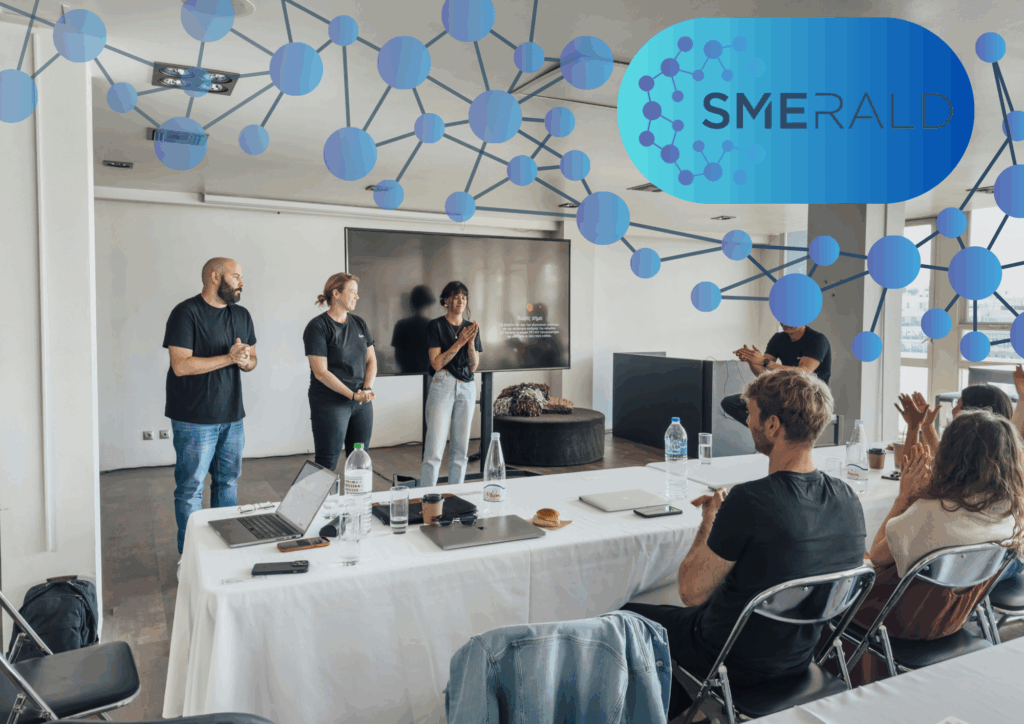Exploring AI Together
When we invited Kanal4 to join the SMERALD piloting, their starting point was typical for many SMEs:
AI was clearly relevant, but there had never been enough time, structure, or confidence to explore it properly. It wasn’t a lack of interest—it was simply the reality of daily business. For them, AI was something you should look into, but never quite got around to.
Opening the door: from uncertainty to orientation
Our first goal at blinc was simple:
make AI understandable, manageable, and directly connected to their work.
We introduced a set of practical tools, demonstrated how to get started, and showed how these tools could be combined into small, useful chains—drafting, refining, generating visuals, or structuring information.
The turning point came when Kanal4 began to test these tools with their own material.
With every experiment, they grew more confident—less focused on “how does the tool work?” and more on “how can this help us?”
blinc’s role shifted naturally: we moved from presenting to guiding, supporting reflections, and helping them evaluate what made sense for their workflow.

Taking ownership: Kanal4 designs their own approach
By the final phase, the dynamic had changed completely.
Kanal4 was no longer exploring AI through examples—we saw them working as a team, integrating what they had learned, and shaping a concept tailored to their own environment.
At this stage, blinc stepped into the background, observing, answering specific questions, and offering methodological support when needed.
The idea they developed remains with them, as part of their internal strategy and daily work—exactly the outcome the SMERALD piloting aimed to enable.
What this experience showed us at blinc
The piloting with Kanal4 made one thing very clear:
SMEs don’t need theoretical lectures or abstract visions of the future.
They need:
- a structured introduction that lowers the barrier to entry,
- space to experiment with their own use cases, and
- a supportive environment where reflection and practical guidance turn experimentation into real competence.
Our main task was to provide that structure, facilitate collaboration, and create the conditions for Kanal4’s own success.
SMERALD enabled this by combining reflection, hands-on exploration, and competence-oriented learning.
For Kanal4, the result was not just a better understanding of AI—but a starting point they could immediately apply and further develop.
And for blinc, it was a clear confirmation of why this approach works.

